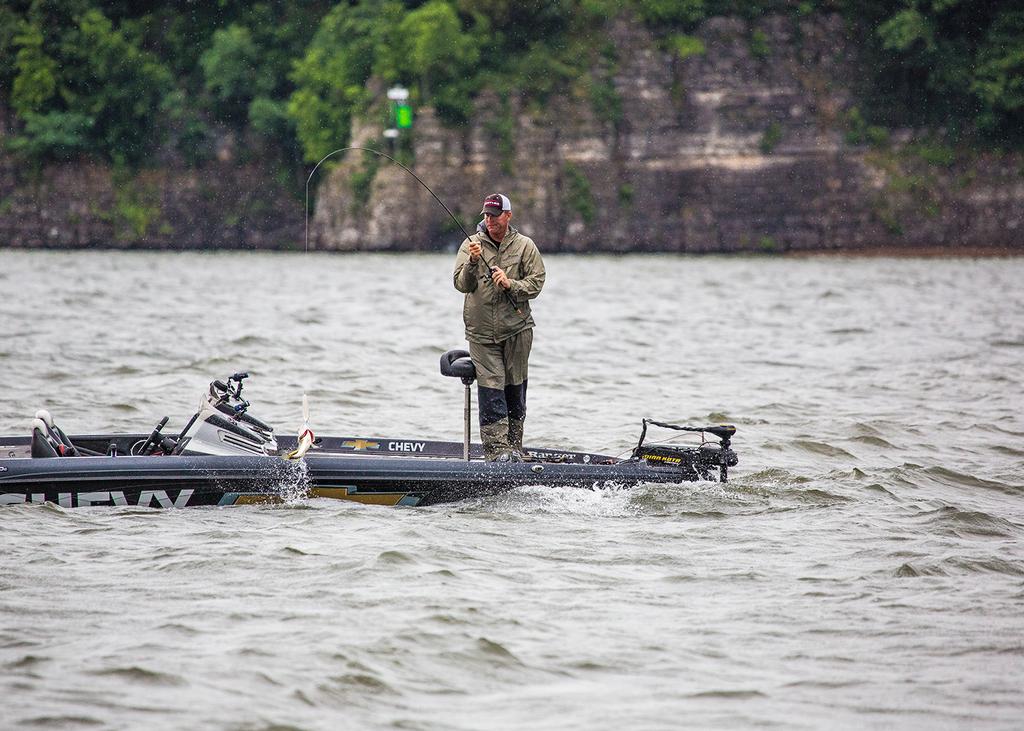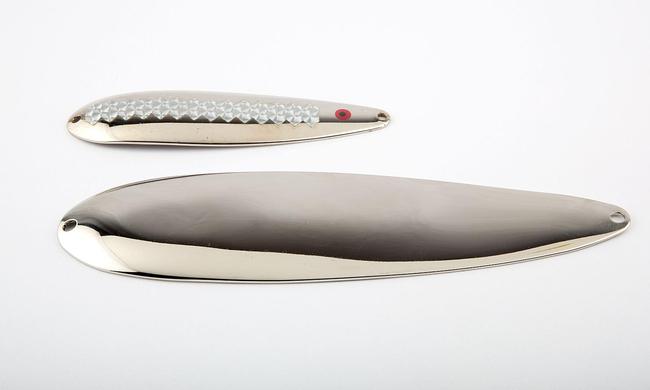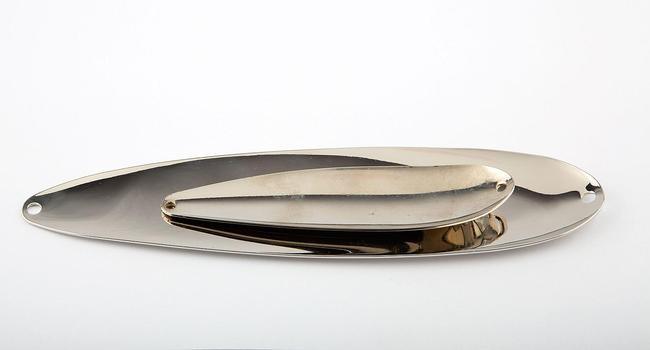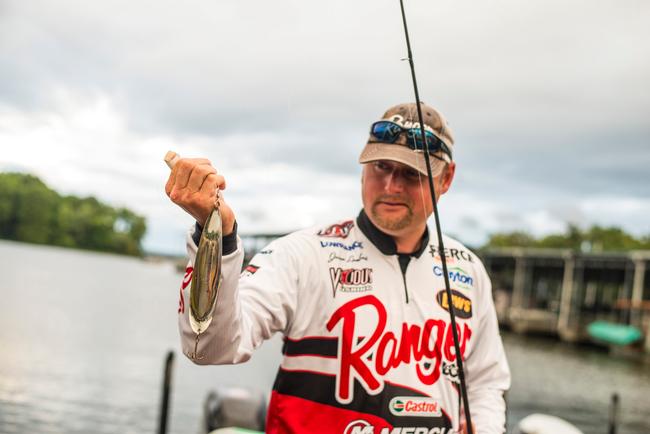More on the Magnum Spoon

By now you’ve either heard about the Ben Parker Signature Series Magnum Spoon and are frantically trying to find one, or you’ve spent too much time watching World Cup soccer and completely missed out on a major bass-fishing storyline.
Let me recap: Giant, 8-inch hubcaps flying through the air, fluttering through the water, being eaten by Kentucky Lake’s biggest, hulking bass.
That’s what you missed last week if you weren’t tuned in to FLWFishing.com’s coverage of the Walmart FLW Tour event on Kentucky Lake.
About half of the top 10 was throwing a new jumbo casting spoon, perfected by bass pro Ben Parker, and the news quickly spread throughout the anglers in the field and the fishing community.
When FLW first broke the story (read about it here), there was no word on where or when the Magnum Spoon would be available to the public. Since then, Parker has filled us in on the details.
Nichols Lures will be handling the sales and distribution of the Magnum Spoon. According to Brooks Woodward, owner of Nichols Lures, the company is offering a discounted price of $15 for all pre-orders through Wednesday, July 2. Woodward expects to have an inventory available in one and a half to two weeks, possibly sooner. He's already shipped the first order.
After the pre-order period, the spoons will sell for their regular price of $17.49 for the silver color. Plans are in order for silver shattered glass (hammered pattern with shattered glass foil) and gold shattered glass that'll be slightly more expensive. Profound Outdoors is also going to be offering three Randy Haynes Select colors.
To pre-order, contact Nichols Lures by phone at 903.589.8100 or by email at [email protected].
Spoon Details
The body of the spoon actually measures 7 3/4 inches long and 2 inches wide. Nichols is fitting it with a swivel for line attachment and a 3/0 Owner Stinger round-bend treble hook that is hand-tied with pearl Flashabou.
Parker first set out to design the spoon as a gizzard-shad imitator, and the design took about a year to perfect.
The most critical part of the spoon’s design is the cup.
“I originally thought it didn’t have enough cup,” Parker says. “But we ended up designing it with flared edges and a flat surface in the center. The flat surface causes it to glide away. It doesn’t flutter as much as it glides. You’ll see on the spoons that the tooth marks are on the back because it goes away and shoots to them [the fish] hooks-first into their faces. It just acts different than any other spoon I’ve ever used.”
Tactical Refinement
According to Parker, bass strike the spoon in one of two ways. They either eat it or strike it with a closed mouth as if trying to kill it.
For the latter, Parker prefers a round-bend treble hook because he can hook bass in the nose when they attack. That’s also the hook style he uses when he’s still trying to figure out whether they’re eating or just striking.
When they’re eating, he pulls out a second Magnum Spoon fitted with a short-shank treble with inward-slanted barbs, such as the Mustad KVD Triple Grip hook.
Doing Work
However the bass are attacking, Parker stresses that you have to set the hook as soon as you feel the bite – and keep setting each time you feel contact until a fish is hooked. Sometimes multiple fish will knock it around as it’s falling.
The presentation is no different than with any flutter spoon, except this one requires a beefier rod. Parker prefers a G.Loomis NRX 916C. It’s a 7-foot, 7-inch 6-power (extra-heavy) rod designed for fishing umbrella rigs.
“What makes a big difference when working that spoon is that the NRX is super-light and the bait is so heavy,” Parker says.
The lightness allows for good sensitivity and reduces fatigue when ripping the spoon.
Tour pro Randy Haynes suggest fishing the spoon on 20-pound-test fluorocarbon.
The pros that were throwing it at Kentucky Lake were making medium-range casts. Long casts are unpredictable, especially in the wind, because the spoon tends to glide off target in mid-air.
The basic retrieve is to rip it off bottom, let it fall on a semi-slack line with the rod tip held high, then repeat until you’ve fished through the school.
See it in Action
1. See Rob Newell's day-three interviews about the Magnum Spoon with Ben Parker, Jason Lambert, Randy Haynes and Clent Davis at Kentucky Lake here.
2. Watch iON action footage of Tour pro Randy Haynes wrestling with the Magnum Spoon at Kentucky Lake by following this link.


